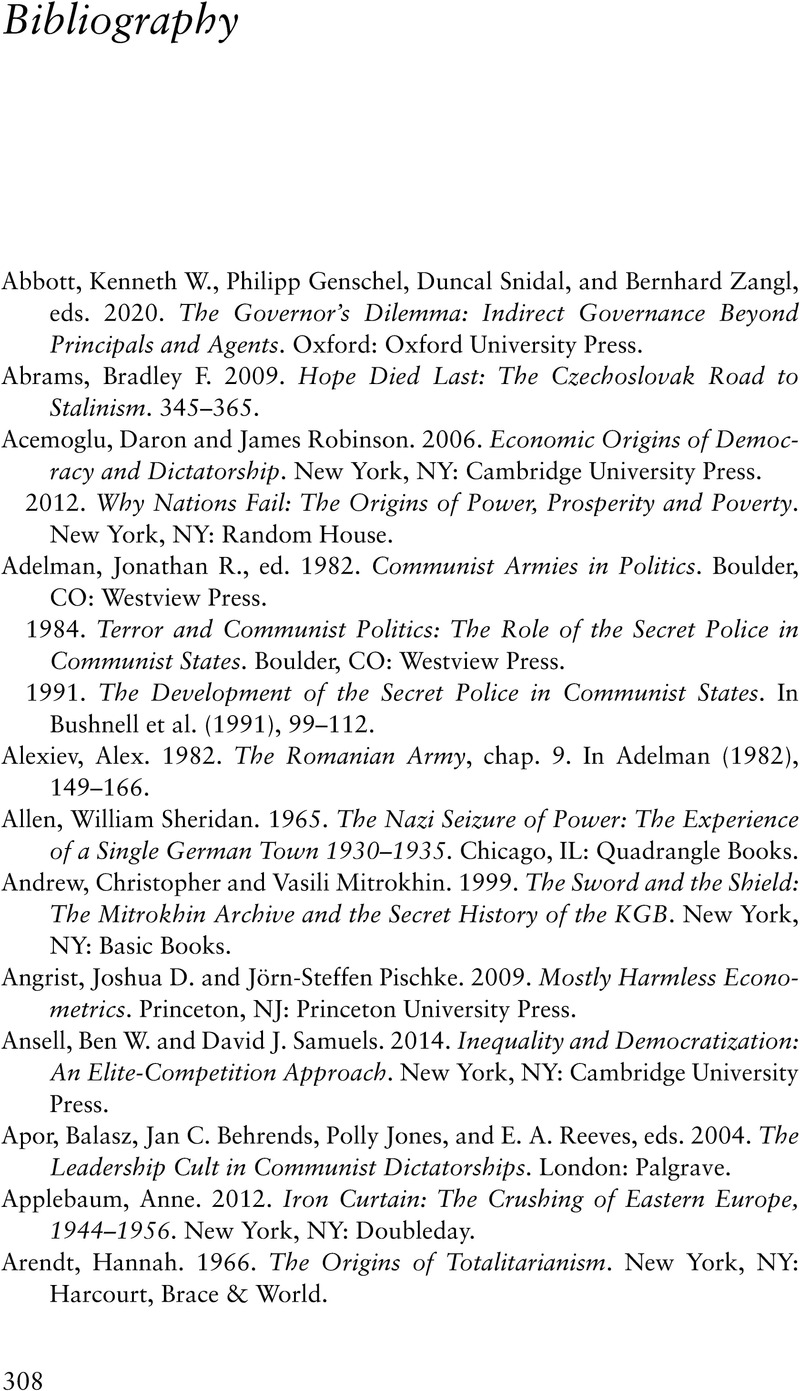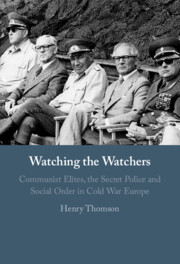Book contents
- Frontmatter
- Dedication
- Contents
- Figures
- Tables
- Acknowledgments
- Part I Introduction and Theory
- Part II Comparative Historical Analysis: Polish People’s Republic and the German Democratic Republic
- Part III Cross-national Quantitative Analysis
- Part IV Conclusion
- Appendix A Secret Police Agencies and Chiefs in Socialist Central and Eastern Europe, 1945–1989
- Appendix B Survival Analysis, Chapter 7
- Appendix C Agency Size Analysis, Chapter 8
- Bibliography
- Index
- References
Bibliography
Published online by Cambridge University Press: 22 February 2024
- Frontmatter
- Dedication
- Contents
- Figures
- Tables
- Acknowledgments
- Part I Introduction and Theory
- Part II Comparative Historical Analysis: Polish People’s Republic and the German Democratic Republic
- Part III Cross-national Quantitative Analysis
- Part IV Conclusion
- Appendix A Secret Police Agencies and Chiefs in Socialist Central and Eastern Europe, 1945–1989
- Appendix B Survival Analysis, Chapter 7
- Appendix C Agency Size Analysis, Chapter 8
- Bibliography
- Index
- References
Summary

- Type
- Chapter
- Information
- Watching the WatchersCommunist Elites, the Secret Police and Social Order in Cold War Europe, pp. 308 - 333Publisher: Cambridge University PressPrint publication year: 2024



